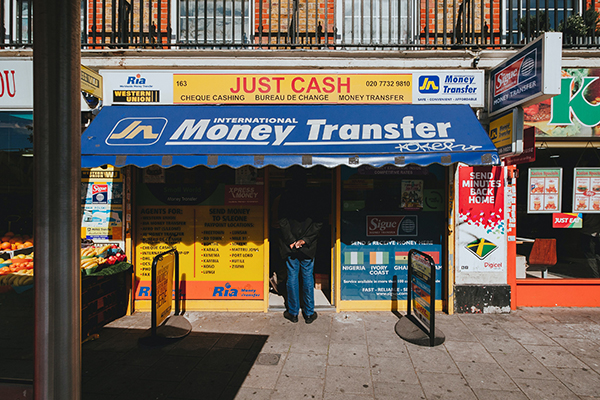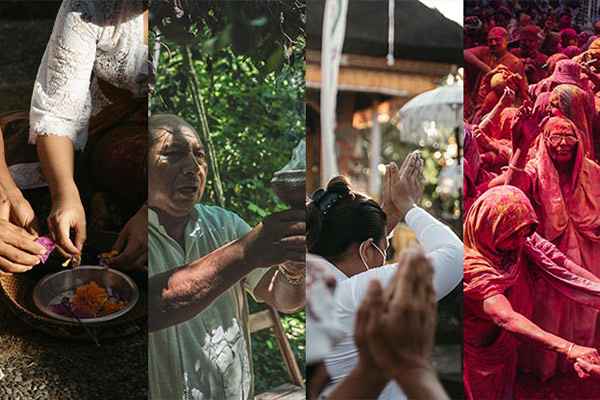
Goodbyes Around the Globe: Death Rituals in Different Cultures
Although different cultures’ death and dying rituals are varied, understanding how to deal with death is as important to one culture as the next. Death is a part of every life, regardless of where or how you live, but beliefs and traditions surrounding death affect the way cultures build societies and interact with one another.

Whenever you talk with friends and family about your travels, there’s a good chance that the discussion includes facts about how people live in other cultures. Learning about other cultures can enrich your life by helping you understand the world from different perspectives and influencing your own practices and traditions. While it might not come up in everyday conversation, the way a culture embraces distinct views on death is just as telling as how its people embrace life.
How is Death Viewed in Different Cultures?
Let’s take a closer look at some of the common dying and death rituals among cultures around the globe.
Buddhist Sky Burials in Tibet
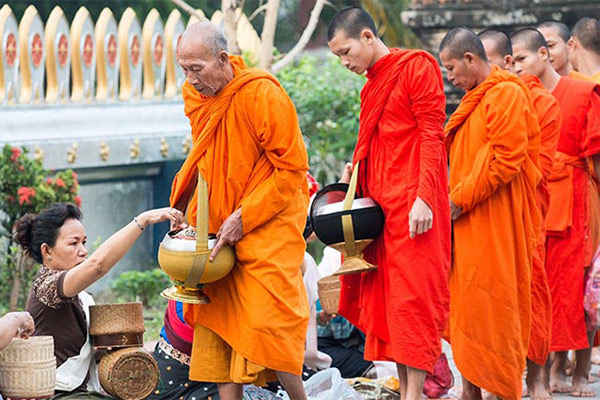
In Tibet, the ancient practice of “sky burial” is still the most popular death ritual. After a person dies, a designated “sky operator” performs the sacred process of dismembering a body at a monastery and taking it to an area of high elevation to be consumed by vultures. Tibetan Buddhists have practiced this tradition for over 11,000 years, and although it may be a culture shock to those unfamiliar with the practice, the tradition is both spiritual and practical for those of the Buddhist faith.
Tibetan Buddhists believe the soul leaves the body after death to await reincarnation, so the body is simply an empty vessel that no longer serves a purpose. However, there must be no trace of the body left behind after death for the person to move on to their next life. Allowing vultures to consume the body helps the deceased’s soul transition.
Buddhism also emphasizes respect for nature, and sky burials honor this by allowing the body to nourish animal life and leave the earth undisturbed.
Hindu Cremations in Varanasi
Cremation is an essential death ritual in the Hindu faith, as it is believed to allow the soul to detach from the body and move closer to its final stage of freedom. Hindus believe the soul goes through a cycle of life and death through reincarnation before reaching “moksha.” This term describes a fully spiritual existence that allows the person complete self-realization and unity with the god Krishna.
Traditionally, families help their loved ones on this journey by cremating them along the Ganges River and spreading their ashes in the water. If the Ganges or another holy river isn’t an option, families can lay the ashes to rest in another river or body of water.
Although they consider the Ganges ideal for cremation, Hindus believe that their intention for the souls of their loved ones is most important. Through the recitation of prayers and mantras, families can help the deceased’s soul reach its next incarnation.
According to Hindu tradition, those cremated in the holy city of Varanasi become free from the cycle of reincarnation. Many cities throughout India have funeral pyres, called ghats, but Varanasi’s are the only ones in the country that burn for 24 hours a day. Immediately after death, mourners wrap bodies in colorful fabrics and dip them into the Ganges River before allowing them to dry on a ghat. The family then burns the corpse, spreads ashes and other remains in the Ganges, and returns home for the customary Hindu grieving period of 10 to 13 days.
Scattering of Ashes in Hong Kong
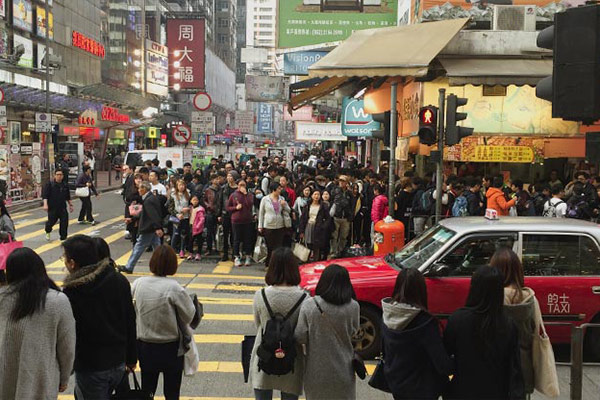
According to the Census and Statistics Department of the Hong Kong special administrative region government, Hong Kong is one of the most densely populated places in the world. The agency reported a 2% decline in the population between 2021 and mid-2022, from over 7.3 million to under 7.2 million. Approximately 61,600 people have died in Hong Kong over the past five years.
Because of its massive population and small size, Hong Kong has limited space for traditional burials, and storage areas for urns often require a years-long waiting list. In Chinese culture, taking urns home is taboo because it allows the worlds of the living and the dead to mingle.
The solution for many is to scatter their loved one’s ashes in communal areas managed by the government’s Green Burial initiative. Through this program, families can choose to lay their loved one’s ashes to rest in one of 13 remembrance gardens or in designated areas in the South China Sea.
Diverse Death Rituals in the Philippines
There are many cultural differences in death and dying throughout the Philippines, a country that’s home to many ethnic groups. According to the policy institute Asia Society, over 86% of the population identifies as Catholic.
For the Tagalog people, in particular, Catholic funeral and burial rituals combine with Filipino traditions. For other groups, the symbols of death in different cultures vary widely.
Catholic Funerals in the Philippines
Families will lay their loved ones to rest with a process called “lamay,” a wake in which family and friends view the embalmed body for up to seven days. On the eve of the funeral, mourners hold a celebratory vigil filled with singing, music, and card games to keep guests awake through the night.
The next day, those family and friends carry the body in a casket to the church with loved ones following behind in a ritual known as the funeral march. After a funeral Mass, the family buries the deceased in a Catholic cemetery.
Ethnic Ceremonies in the Philippines
Ethnic groups in the Philippines have unique traditions to honor the deceased in their communities. Rituals vary among indigenous cultures, as each has its own beliefs and attitudes toward death and dying.
Here are some examples of how Filipino ethnic groups honor, celebrate, and grieve their deceased loved ones:
- The Benguet people blindfold the body and place it on a chair next to the main entrance of the house, where elders chant a biography of the deceased the night before the funeral.
- In the Caviteño tradition, a person chooses a tree once they’ve fallen ill and know death is near. Once the ill person dies, loved ones entomb the body in the tree’s hollowed trunk.
- Apayo ceremonies involve burying the dead under a family member’s kitchen, along with personal items that can help in the journey through the afterlife.
- Itneg (also called “Tinguian”) families dress loved ones’ bodies in formal clothing, place them in a chair, and put a lit cigarette between their lips as part of a ritual that lasts for weeks.
Famadihana (Turning of the Bones) in Madagascar
For the people of Madagascar, known as the Malagasy, the dead remain a part of the living world for years after dying. The Malagasy believe the dead can only move on to the next life once their bones have decomposed and that an occasional exhumation prevents them from being stuck in a lonely limbo. This belief is the foundation for the tradition of “famadihana,” or “turning of the bones.”
Once every five to seven years, families exhume the bodies of family members and spray them with wine or perfume. As joyful music plays, they remove the old burial clothes from the body, rewrap it, and celebrate with their deceased loved one throughout the day. The families drink, talk, and even dance with the deceased until the evening. Before the sun sets, they place the body back in its crypt, turn it upside down, and seal it until the next famadihana.
Día de los Muertos in Mexico
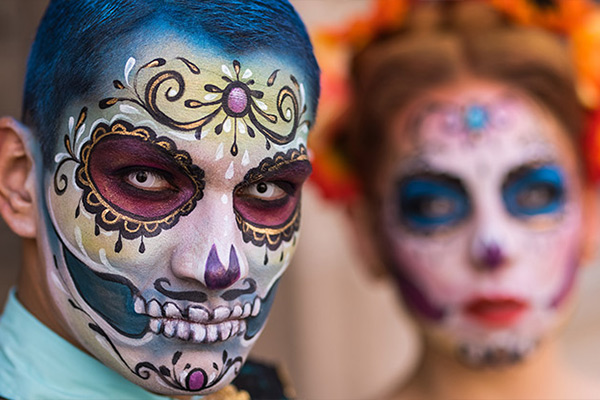
Alt: Two young people at a crowded celebration wearing the traditional female attire of Día de los Muertos, a symbolic celebration of death in Mexican culture.
Caption: Dressing as a skeleton is festive and a way to waken the dead for the celebration.
A popular holiday in Mexico, Día de los Muertos, or “Day of the Dead,” is an annual celebration of the dead that combines indigenous and European religious cultures. With roots going back over 3,000 years to Aztec culture, the holiday is celebrated from Oct. 31 through Nov. 2 annually. Oct. 31 is originally a religious holiday called All Hallow’s Eve that prepares the faithful for the next day, All Hallows’ Day. Also called All Saints’ Day, All Hallows’ Day celebrates the lives of saints, while All Souls’ Day on Nov. 2 celebrates all who have died.
The Day of the Dead marks the one time a year many Mexicans believe the boundary between the spirit world and the world of the living disappears, allowing deceased loved ones to join their friends and families in celebration. People eat, drink, play music, dance, and have parades, often in costumes and makeup that resemble skeletons or skulls.
One of the most popular symbols of Día de los Muertos is the sugar skull, a mold of white sugar in the shape of a skull that celebrants decorate and present as offerings to the deceased along with candles, flowers, and food.
Explore Cultural Differences in Death Through Living
Death is a part of life we all experience, but every culture has its own death customs. Whether you’re interested in learning more about the death beliefs of your ancestors or discovering how death in different cultures and religions can shape the way you view your own life, learning about them can help you understand and appreciate the values of other cultures.







